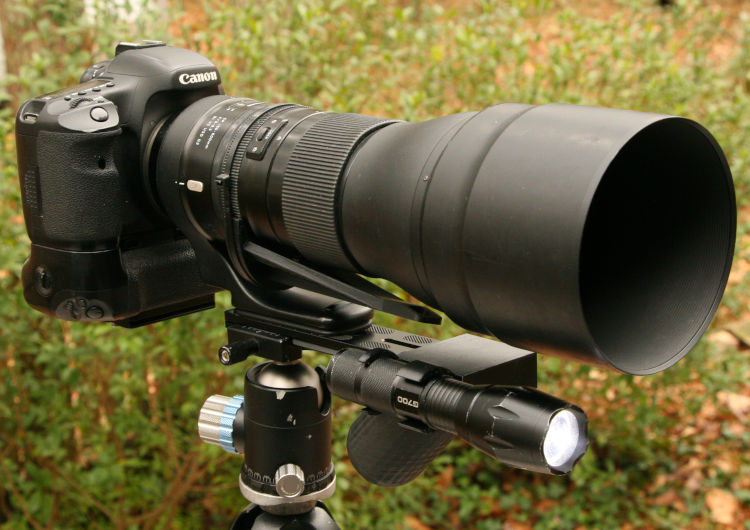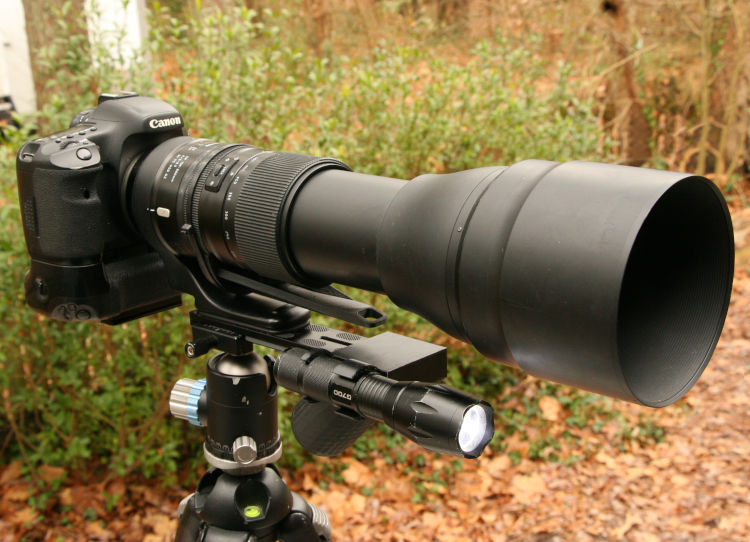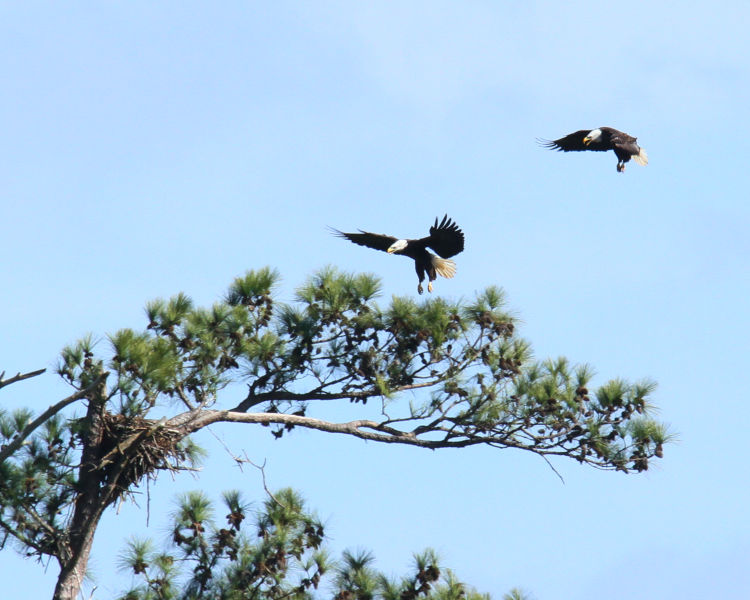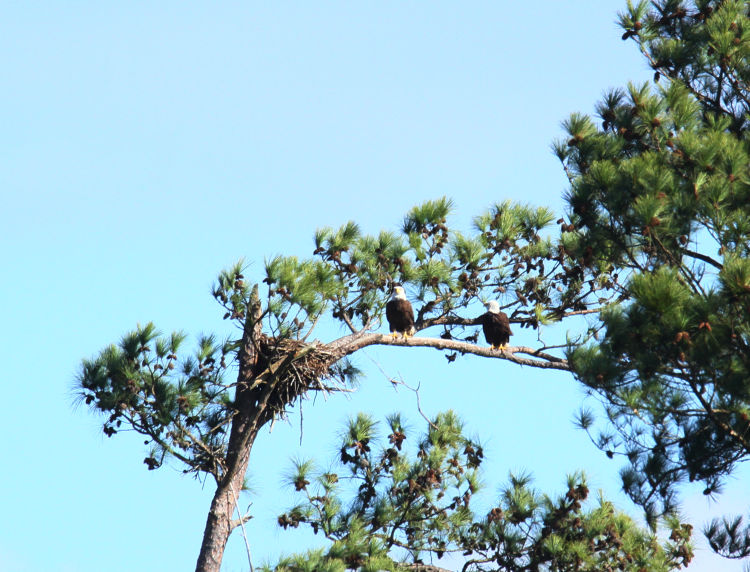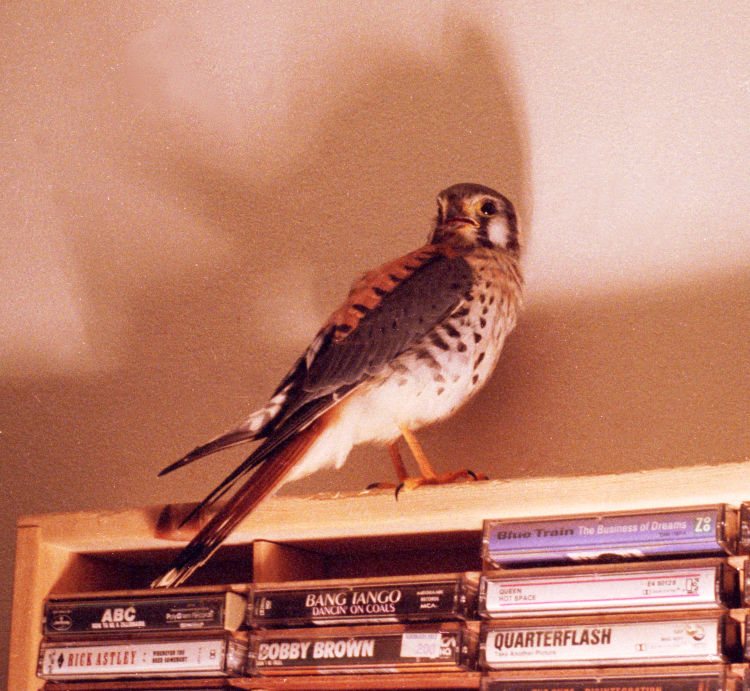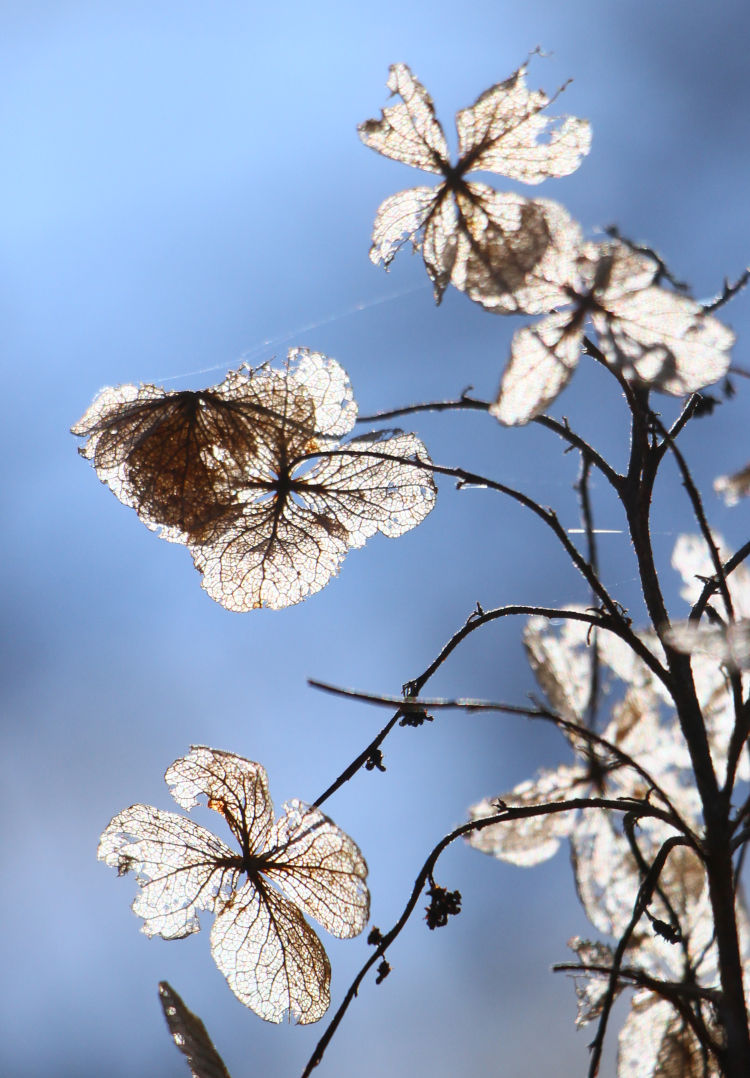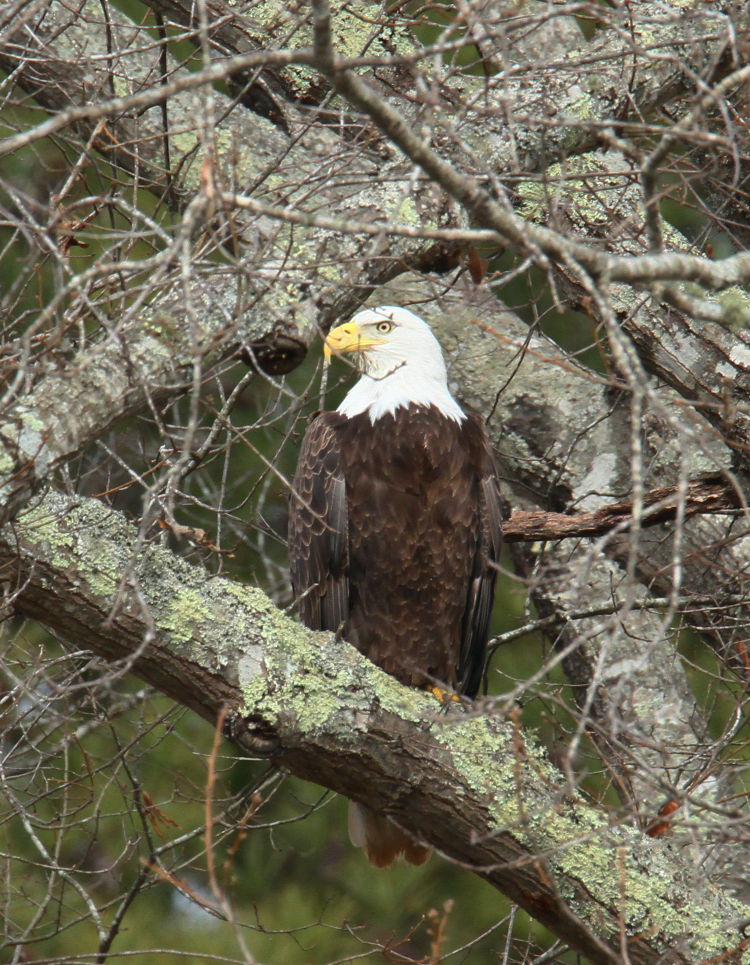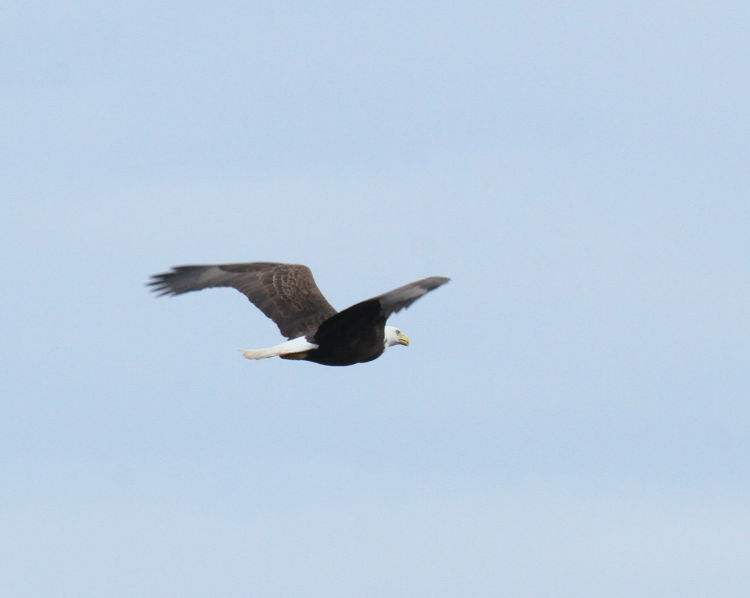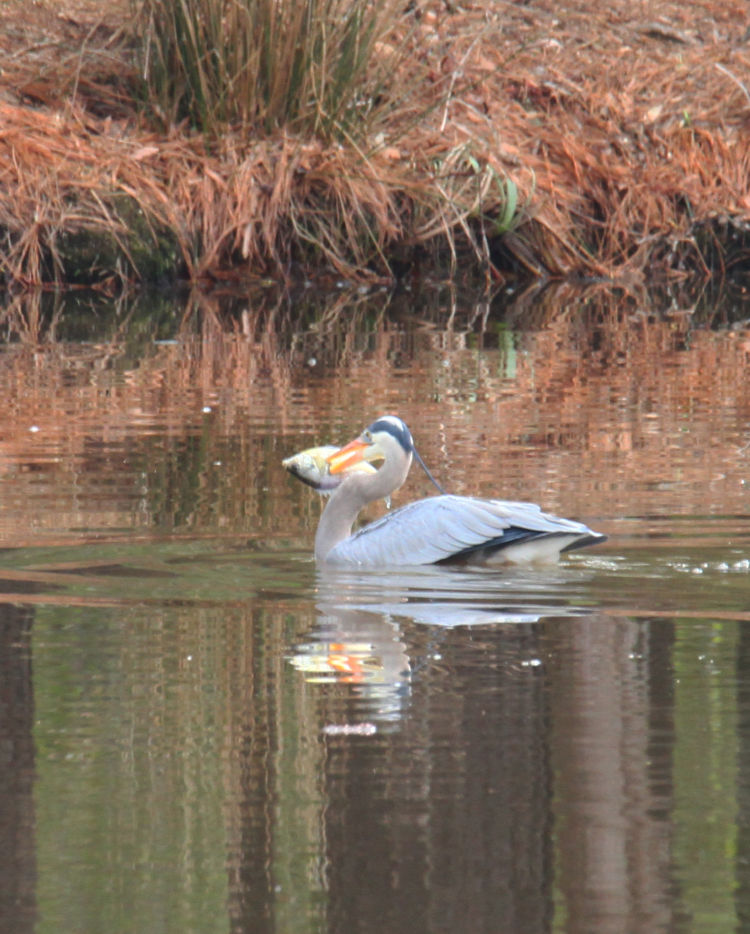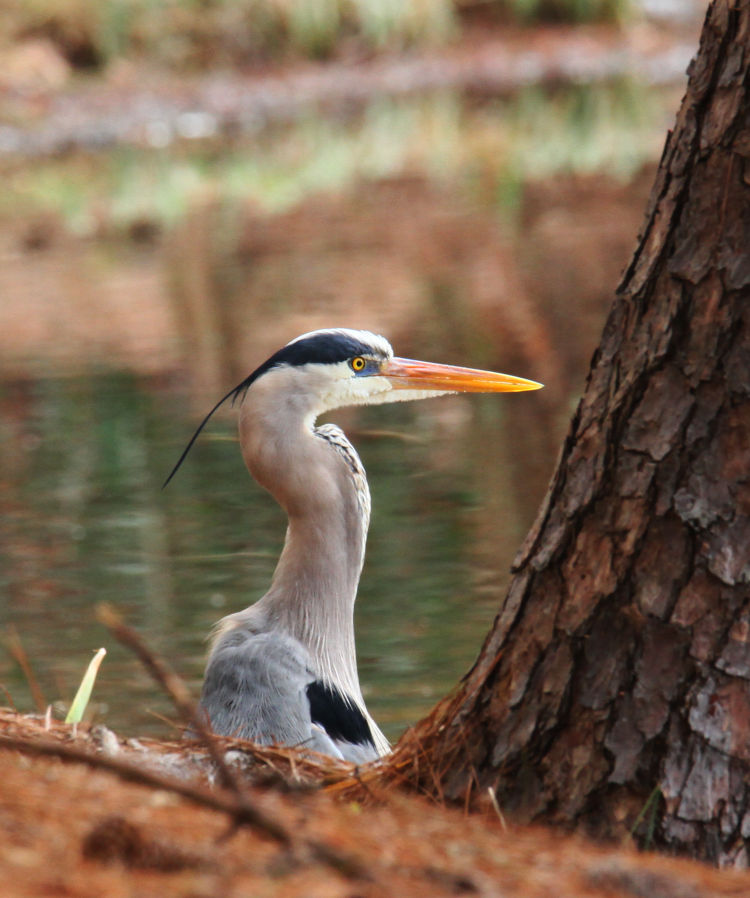With the weather being surprisingly warm and clear and a not-full moon shining down, I elected to traipse over to the neighborhood pond and try my luck spotting the beaver(s). This time I did not have The Girlfriend to wield a light for me so I could focus, since she’d gone to bed hours before, so I strapped a powerful flashlight to the lenshood of the Tamron 150-600 and did a quick test out back – wonder of wonders, it was aimed precisely where it needed to be and I could see enough to manually focus. This was quite lucky; like most flashlights, it widened towards the lens, which should have aimed it cockeyed and too high as it pressed against the lens barrel, but I had the lenshood on reversed (not worried about the sun’s glare at midnight) and the resultant backwards taper matched the flashlight perfectly. And so armed, I went down to the pond.
The moonlight helped a little, but not a lot. Basically, the brighter sky would reflect off of the water’s surface and allow me to dimly see if anything was cutting across it – when the sky was reflected in the water. Since the pond is surrounded by trees, this was limited to mostly near me and not at all towards the opposite shore. But, as I’d found out two years ago, you can also eyeball the reflections of residents’ yard lamps in the water, which only show a little point of light but this would change as the ripples of something passing cut across the reflection. Very soon I picked this up and turned on the lens light, only to find that it was Canada geese.
But then as I neared the far end, walking as quietly as possible, I started hearing something over the idle muttering of the ducks, and it certainly sounded like beaver gnawing. It was on the opposite side from me and thus at least 80 meters off, well out of range of the Vivitar 285, so I continued quietly around the far end. As I closed in, I found that my guesstimated location, based on hearing alone, was pretty close, just a few meters shy, as the beaver continued to issue occasional gnawing noises. The problem now was, I would be entering the pool of light from a streetlamp alongside the pond and would become far more visible to the beaver than it was to me, but there was nothing to be done about that.
As suspected, as I got close to the location where the sounds had been issuing from, I could see the ripples of the beaver heading away, alerted by my presence but not so startled that it felt it had to submerge. Switched on the light, found my focus, and stating firing off a few frames.

I really didn’t have any doubts at this point about it being a North American beaver (Castor canadensis,) but this shows that the rig was working reasonably well, though focusing manually while the beaver was swimming was awkward – Tamron put the focus ring near the base of the lens where you can’t really support it steadily. I’ve been happily using my own long lens grip and it makes a significant difference, but not while trying to focus, and I’ve been trying to hash out a design for a focus lever or mechanism that will sit well forward alongside the grip. For the time being, I may try a monopod.
By the way, the green glow alongside the beaver’s body is actually the reflection of a streetlamp on the opposite side of the pond, one of the old mercury vapor lights that appears blue to our eyes, but goes green in the camera.
And I found that my technique needs a little work.

It looked focused in the viewfinder, but mostly what I was seeing by the flashlight was the reflection of the eye, not very big at all (this is cropped,) so obviously this is lacking, but there’s not a lot I can do about it except be as careful as possible. The same issue showed up a little later on, which we’ll get to in a moment.
Having snagged a few frames and with the beaver passing behind me, I switched off the lens light and started moving on, more into the streetlamp alongside me, and within a few moments I heard the sharp crack! as the beaver gave its alarm water slap and dove. I’ll have to keep checking, too, because as I rounded the far end, before approaching this one, I heard a curious tiny splash of the water over near where the old lodge was. I didn’t see anything by flashlight when I checked, but it’s possible there’s more than one beaver there again.
Up near the near end and crossing the berm that forms the dam, I was able to switch on the headlamp to see my footing without worrying about spooking my target now, and this quickly pointed out something a short ways out onto the water.
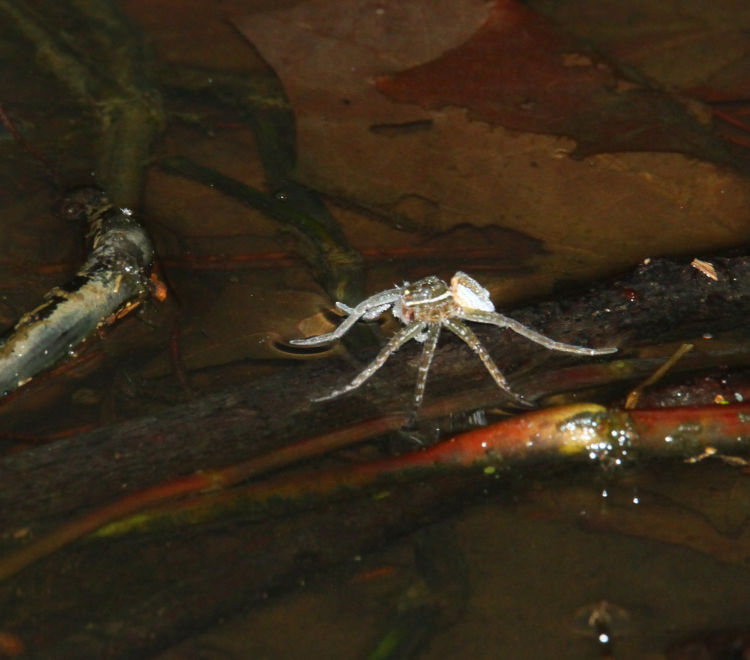
Seeing the eyes reflecting the headlamp beam back to me, I focused (almost) on the moderately-sized six-spotted fishing spider (Dolomedes triton) out on the water. Considerably closer than the beaver was, I had to make some adjustments to the flash power because the first frame blew it out entirely.
And then, another few meters along, another subject, but this one I was able to see much better and so focus was nailed.

The pine cone in front of it gives some indication of size – this American bullfrog (Lithobates catesbeianus) was larger than my fist and never budged a millimeter. The temperature was hovering around 15°c, pretty pleasant for January and a welcome change after the sub-zero overnight temps four or five days ago.
Because I saw this guy, I decided to check out the backyard pond when I got back to see if any of the resident green frogs was peeking out as well. But on going out the back door, I heard familiar noises again and allowed myself to be sidetracked for a moment.

Again, all I was seeing was the eye and a hint of outline, but I should have framed better than that with that rack up there. The three of them (white-tailed deer, Odocoileus virginianus) were on the move and trying to screen their passage with the trees, so… [whiny whiny excuses go on]
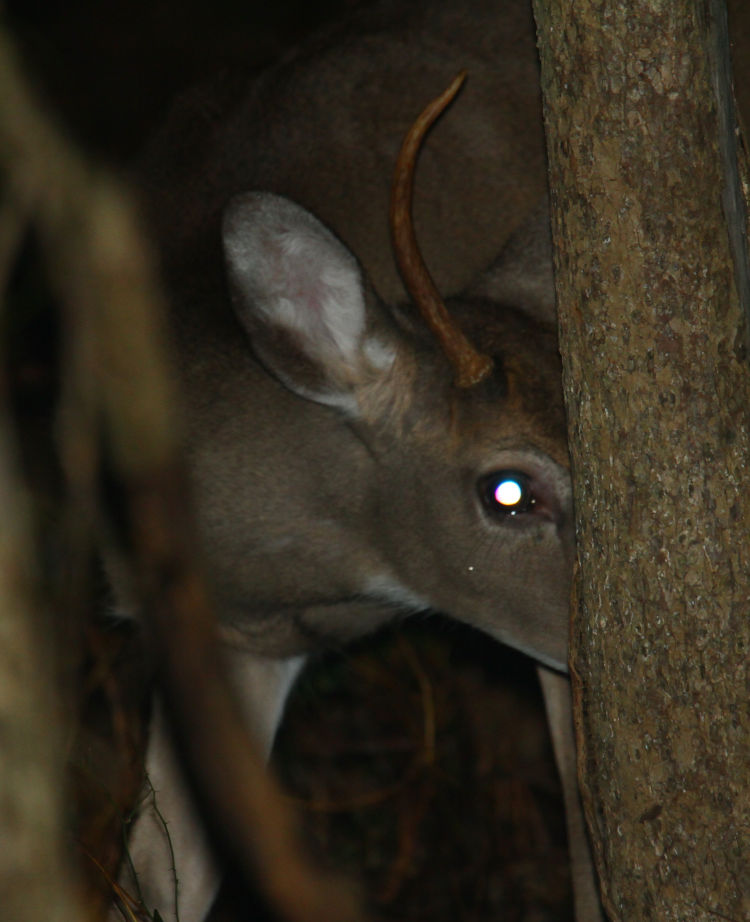
They seem to be visiting routinely each night, so I guess I’d better consider that blind, and the temperature was a lot more conducive to sitting out there now, but no one ventured any capital either. I mean, c’mon.
No sign of any frogs in the backyard pond, which surprises me a little because they never seem to waste any time popping out the moment it’s slightly warmer overnight, but I found one more subject before I wrapped it up for the night, once again in the crack of the door that leads into the water heater closet and crawlspace.
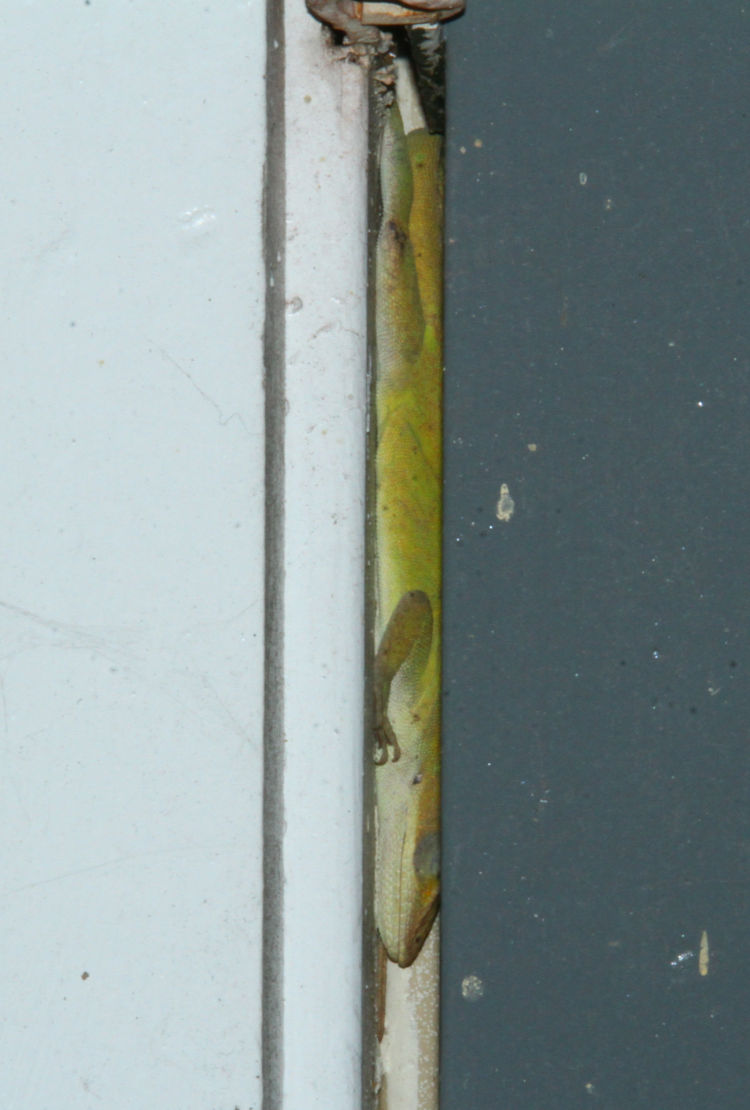
I’d spotted it in there during the day, too, so no surprise here, but this Carolina anole (Anolis carolinensis) hasn’t seemed inclined to settle in for the winter, and I guess it’s finding decent shelter for the temperature drops. From time to time I have to go through this door, and I make it a point to check carefully before whipping it open – almost always the lizard is someplace else at those times, though I don’t know exactly where. But this one, at least, is making do.






















































